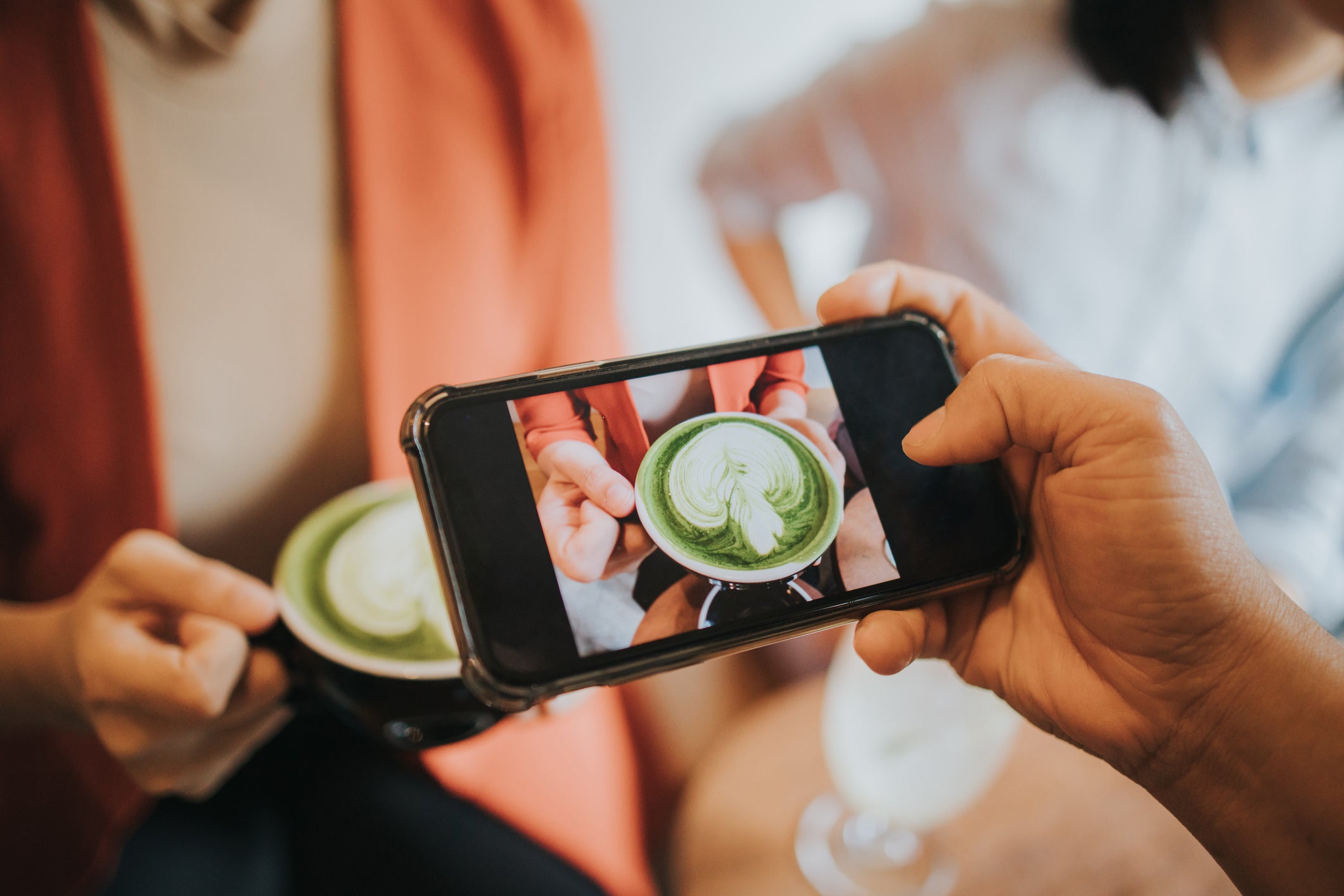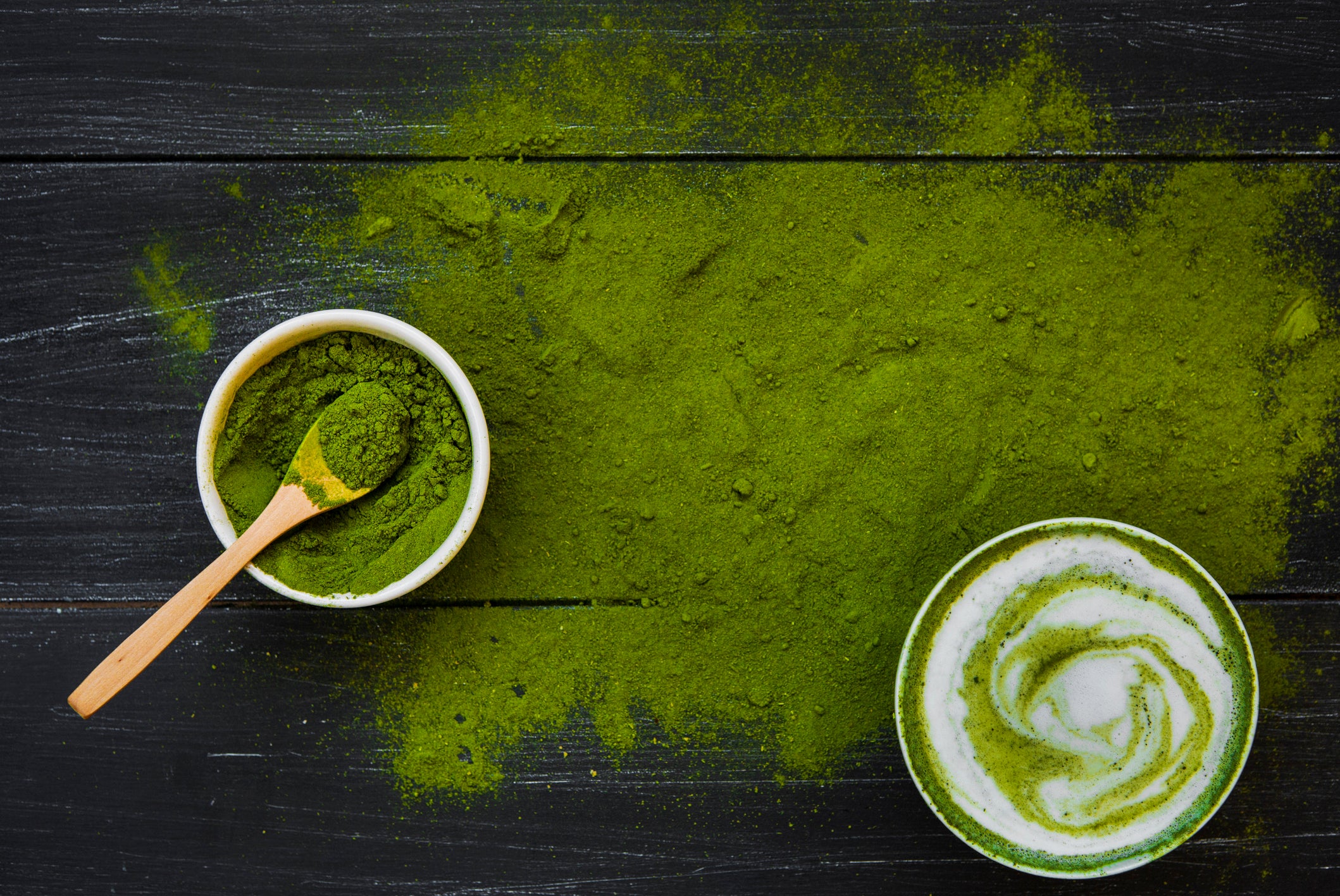
Throw a stone anywhere in central London nowadays and you’re sure to hit someone holding a clear takeaway cup of vivid green matcha latte. The chances of the drink being from Blank Street Coffee are extremely high, and the chances of it being photographed or filmed are even higher, as matcha lattes are the It Girl drink of the moment, rendering them inescapable on TikTok and Instagram.
To say that iced matcha lattes are all the rage right now is an understatement. Interest in this particular type of green tea leaf has skyrocketed in the UK in recent years by as much as 200 per cent, according to retail figures, fuelled by the wellness boom that has us reaching for this antioxidant-rich caffeine alternative. The verdant green colour of the tea (think Brat, but a bit more mellow) is also highly appealing on social media, making it instantly photogenic and lending itself not just to drinks, but to matcha ice creams, matcha cakes, matcha cookies, and even matcha bread. But online trends are like a twisted Midas touch, warping things beyond recognition, and matcha is just the latest thing to have the authenticity sucked out of it.
Arguably, the high street chain that has pushed matcha lattes to new heights in the UK is Blank Street Coffee. The American chain opened its first store in London just two years ago, but it’s now almost as ubiquitous as Pret A Manger and Starbucks, its green storefront popping up on every corner in the city. Its reputation for serving matcha has preceded the brand so much that, despite being called Blank Street Coffee, searching for a branch on Google Maps shows you a description that reads: “Refreshing Matcha Drinks.”
Other chains have quickly jumped on the milky green bandwagon, introducing an array of bright and colourful matcha-based drinks to their menus. Pret serves its iced matcha latte over coconut milk, while Black Sheep Coffee’s sugar-packed matcha range includes flavours like peaches and cream, blueberries, and turmeric – the latter containing a staggering 37.5g of sugar. The rush to bring more matcha to a growing audience of snap-happy consumers has also reached smaller, independent coffee shops bidding to compete with the big boys.
Omar Shah, a restaurateur and CEO of the Maginhawa Group, recently launched his Filipino bakery, Cafe Mama & Sons in Kentish Town. His initial focus was serving up great coffee and Filipino-inspired foods, but he quickly clocked that getting matcha on the menu was crucial for business. The cafe now sells a range of layered matcha drinks with popular Filipino ingredients like ube, mango and Milo. “We sell more matcha now than coffee,” Shah says. “Everywhere is just matcha. We had just one matcha drink until six months ago, when we realised we had to introduce more options because of how trendy it is.”
Shah points to how easy it was to incorporate matcha into the cafe’s menu as another reason for why so many shops are now leaning on it. “Coffee is an expensive endeavour,” he says. “The equipment sets you back thousands of pounds, and the maintenance can get just as expensive. Then there’s training your staff, which takes time, and training them how to perfect the microfoam for a flat white is worth it. But it’s also costly. Matcha, on the other hand, is relatively simple to prepare, in the sense that it comes in powder form that is whisked with hot water. We whisk it to order, but places don’t even bother, they just make a big batch and add it to the drinks.”

There is a big difference between the quality and type of matcha you’re getting on the high street and what you would get in a traditional Japanese tea ceremony, a practice that originated in China but has been a permanent part of Japanese culture since the 12th century. Matcha is a specific species of tea plant, grown in shade to give it its bright green colour and savoury flavour. After picking, the tea leaves are steamed, dried and ground into a very fine powder.
Japan, where most matcha is produced, also has strict food labelling standards that must be adhered to before a product can even call itself “matcha”. Authentic matcha must be of the Camellia sinensis variety that has been shade-grown for two to three weeks before harvesting, and it has to have been steamed and dried without being rolled to protect the tender leaves. Keiko Uchida, a master of chado (the way of tea) for over 25 years, says most customers buying matcha lattes are actually getting green tea powder, which is a much cheaper and less strictly regulated product.
“Green tea powder is much easier and quicker to produce than matcha, so it’s cheaper but it also tastes more bitter,” she explains. This is why some people who try plain matcha lattes complain about the taste. Making green tea with boiling hot water can enhance this unpleasant flavour, but cafes trying to fulfil a tsunami of matcha orders won’t necessarily be paying attention. Instead, the syrups and fruit purees beloved by social media users mask the acrid taste, but boost sugar content in a drink otherwise perceived as healthy, and therefore negate the high levels of cancer-fighting polyphenols and antioxidant-rich catechins found in the tea. Studies suggest that matcha may have the potential to slow cancer growth and improve heart health, though further research is needed in this area.
In some ways, the matcha boom has made this deeply traditional drink unrecognisable
Uchida says that there have been conversations in Japan around giving matcha a status similar to that of champagne, under which the term “champagne” can only be used for sparkling wines produced in the Champagne region of France. “The demand for matcha has gone up so much that there was a matcha shortage recently,” she adds. “I think it would be good to give it this type of status. Otherwise, any old green tea can be called matcha but people outside of Japan won’t know any better.”
The matcha shortage arose last autumn as unprecedented demand for the green stuff soared globally. Within Japan, tea companies imposed buying limits on tins of matcha powder, while the government is reportedly planning to introduce subsidies to encourage tea growers to produce more tencha, which means tea for grinding, to meet and cash in on the demand for coveted matcha lattes. But all the hype around showy, multicoloured matcha drinks means many customers have no idea how matcha is traditionally prepared or enjoyed.
Japan House in Kensington says sales of matcha from its tea stand have increased by more than a third since 2023. But, while the stand primarily offers matcha prepared in a way as close to the traditional method as possible, it has experienced a rise in customers requesting syrups or honey to sweeten the drink. They are “taken aback” when told they only prepare matcha the way it is typically done in Japan, which is to say with no sweeteners other than sugar syrup. Japan House adds that many customers think matcha always comes with milk because of how trendy matcha lattes have become, which means the team now checks how people want their drink to avoid misunderstanding.

In some ways, the matcha boom has made this deeply traditional drink unrecognisable. But modern-day Japan has also lost some of its connection to matcha, says Sarah Stewart, a tea practitioner for over 20 years. “A lot of Japanese people I talk to admit they don’t know anything about chado, and there’s a sense of insecurity about it,” she explains. “There’s actually not very many places you can go and just drink Japanese green tea, matcha or otherwise, compared to the number of fancy coffee shops there are. There needs to be a place where people can enjoy matcha, which doesn’t have to be a tea room or within the study of chado.”
In fact, the consumption of matcha in Japan has been declining for several decades, as preferences among modern Japanese people shift. However, the matcha latte phenomenon is gaining some ground there, too, which could help give people a more accessible, everyday way of enjoying the tea. But it depends on which way the trend goes, Stewart warns.
“If the matcha trend is here to stay and we’re going to continue to see an evolution of appreciation of it, then this could be a good first step,” she says. But, and there’s always a but, “as we know with any TikTok or Instagram trend, if it’s more about the appearance or the wellness factor, the worry is that matcha will be the hot thing for the next six months and then something else will take over”.
“My hope is it will be here to stay and we see the same kind of evolution we saw for the appreciation of fine artisanal coffee, where you can now go into dozens of coffee shops that will tell you the origin of the beans, who the farmer was … you’re not adding a ton of sugar and flavoured syrups to be able to enjoy that and really appreciate it as a gourmet experience.”
Shah also believes there’s the potential for deeper interest in matcha and its heritage. “Matcha is going to be bastardised beyond recognition in the short term. That’s already happening,” he admits. “But there’s going to be a growing group of people who are going to get really nerdy about it, and will spark interest and creativity around matcha. I don’t see it going anywhere for some time.”
The truth about the viral ‘almost forgot this was the whole point’ trend
‘Crazy Aunt Rose’ goes viral flaunting tattoos: ‘I deserve stickers’
Why is everyone obsessed with Labubus? Psychotherapists explain
Paul Hollywood: I put on Coldplay and make some bread
I tried McDonald’s new McCrispy Strips — I’m not surprised they’re dividing customers
‘Am I too English or too Indian?’ Mehak Kansal’s debut cookbook says: both







